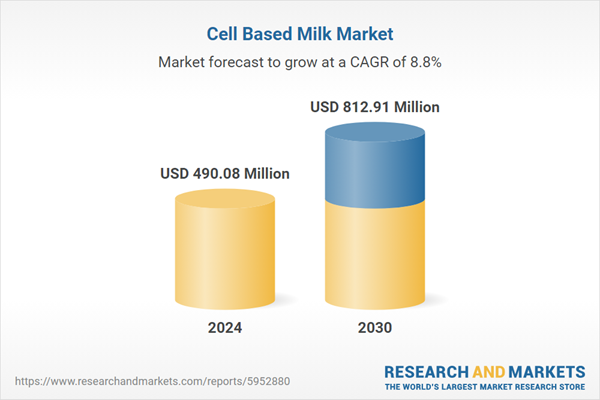Human Breast Milk is the fastest growing segment, North America is the largest regional market
Speak directly to the analyst to clarify any post sales queries you may have.
10% Free customizationThis report comes with 10% free customization, enabling you to add data that meets your specific business needs.
Key Market Drivers
Continuous advancements in cellular agriculture technology represent a primary driver for the global cell-based milk market, directly addressing the feasibility and scalability of producing milk components without traditional animal farming. Innovations in cell line development, bioreactor efficiency, and media optimization are rendering the process more viable and cost-effective. These technological milestones are crucial for moving cell-based milk from research to commercial production, enhancing product quality, and lowering manufacturing costs.Key Market Challenges
The complex landscape of regulatory approval and achieving widespread consumer acceptance for novel food technologies across diverse global regions significantly impedes the growth of the Global Cell Based Milk Market. The absence of clear and harmonized regulatory pathways in most jurisdictions directly restricts market entry and commercialization efforts. For example, according to the Good Food Institute, as of December 2023, no country had yet granted commercial regulatory approval for the sale of milk directly produced from animal cell cultures, illustrating the nascent stage of the regulatory framework for this specific novel food technology. This lack of established guidance and approvals prevents companies from effectively scaling production and distribution, directly hindering market expansion.Key Market Trends
The global cell-based milk market is significantly influenced by strategic industry partnerships and collaborations, which are accelerating product development and commercialization. These alliances enable startups to leverage established distribution networks and market expertise from food and dairy entities. According to the Good Food Institute Europe, precision fermentation companies, including non-animal dairy protein developers, raised €49 million in the first half of 2024, up from €33 million in 2023, indicating growing investment in collaborative efforts. Partnerships are crucial for scaling production and navigating regulatory landscapes.Key Market Players Profiled:
- Wilk Technologies Ltd.
- TurtleTree Labs Pte. Ltd.
- BIOMILQ, Inc.
- Calidad Pascual S.A.U.
- Nestlé S.A.
- BetterMilk Inc.
- Opalia Co.
- Perfect Day, Inc.
- Formo Foods (Legendairy Foods)
- Better Dairy
Report Scope:
In this report, the Global Cell Based Milk Market has been segmented into the following categories:By Type:
- Raw Milk
- Human Breast Milk
By Cell Source:
- Cows
- Goat
- Sheep
- Camels
- Mammalian Cells
- Others
By Form:
- Powder
- Liquid
By Region:
- North America
- Europe
- Asia-Pacific
- South America
- Middle East & Africa
Competitive Landscape
Company Profiles: Detailed analysis of the major companies present in the Global Cell Based Milk Market.Available Customizations:
With the given market data, the publisher offers customizations according to a company's specific needs. The following customization options are available for the report.Company Information
- Detailed analysis and profiling of additional market players (up to five).
This product will be delivered within 1-3 business days.
Table of Contents
Companies Mentioned
The companies profiled in this Cell Based Milk market report include:- Wilk Technologies Ltd.
- TurtleTree Labs Pte. Ltd.
- BIOMILQ, Inc.
- Calidad Pascual S.A.U.
- Nestlé S.A.
- BetterMilk Inc.
- Opalia Co.
- Perfect Day, Inc.
- Formo Foods (Legendairy Foods)
- Better Dairy
Table Information
| Report Attribute | Details |
|---|---|
| No. of Pages | 185 |
| Published | November 2025 |
| Forecast Period | 2024 - 2030 |
| Estimated Market Value ( USD | $ 490.08 Million |
| Forecasted Market Value ( USD | $ 812.91 Million |
| Compound Annual Growth Rate | 8.8% |
| Regions Covered | Global |
| No. of Companies Mentioned | 11 |









